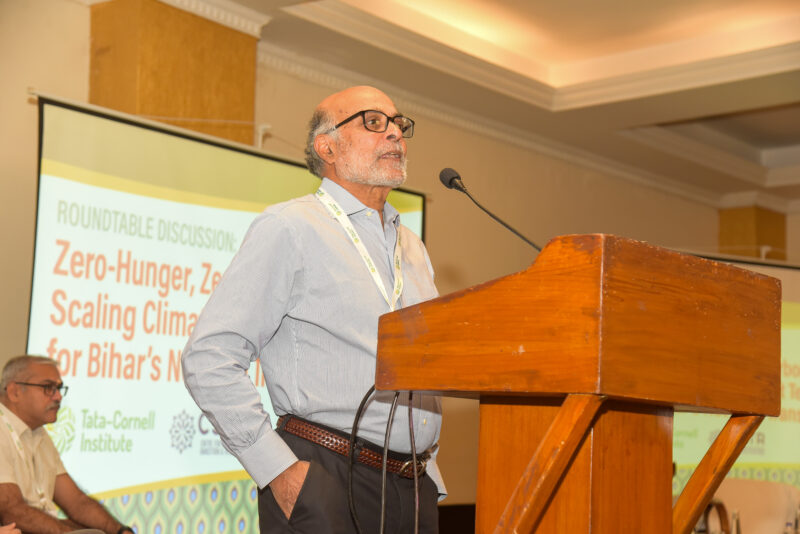Assessing Livestock Farmers’ Willingness to Pay for Sex-Sorted Semen
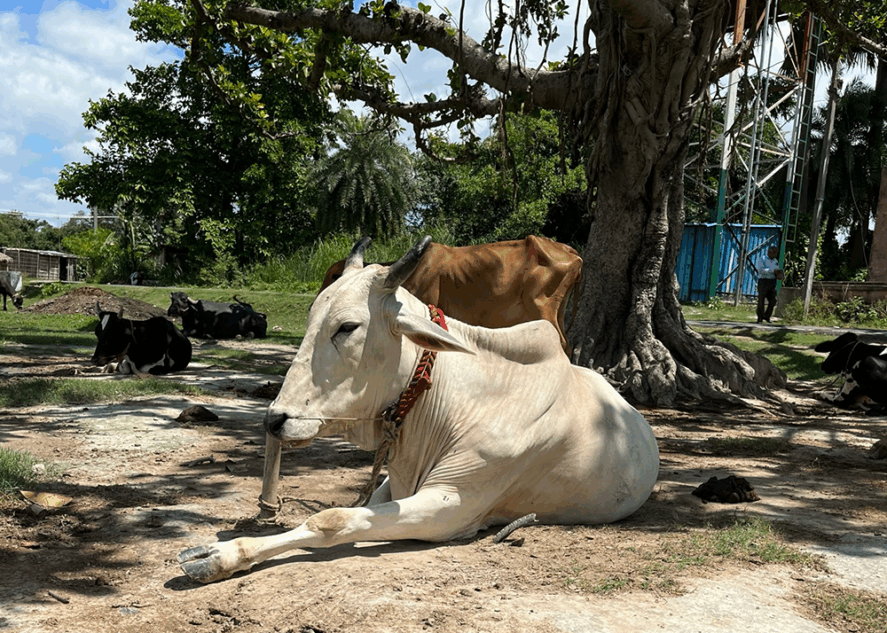
With one of the largest cattle populations in the world, India’s livestock sector serves as a major source of livelihood for over 70% of rural households and contributes around 30% of farm income. India’s milk production has consistently grown in recent decades, nearly tripling from 84,406 thousand tons in 2001–02 to 239,299 thousand tons in 2023–24. However, milk productivity varies widely across the country, with states like Bihar lagging considerably behind the national average. In 2022–23, while the national average milk yield was 6 kg/day/animal, Bihar’s yield stood at 4.6 kg/day/animal. One of the major reasons for this significant difference is that Bihar is home to a relatively higher proportion of unproductive, non-descript cattle varieties. In addition to this productivity gap, greenhouse gas emissions from the sector remain high due to the large (and increasing) number of animals, making Bihar one of the states with the highest livestock emissions. In this context, policy interventions aimed at reducing herd size while increasing productivity, which would lead to higher milk production and lower emissions, are critical in states like Bihar.
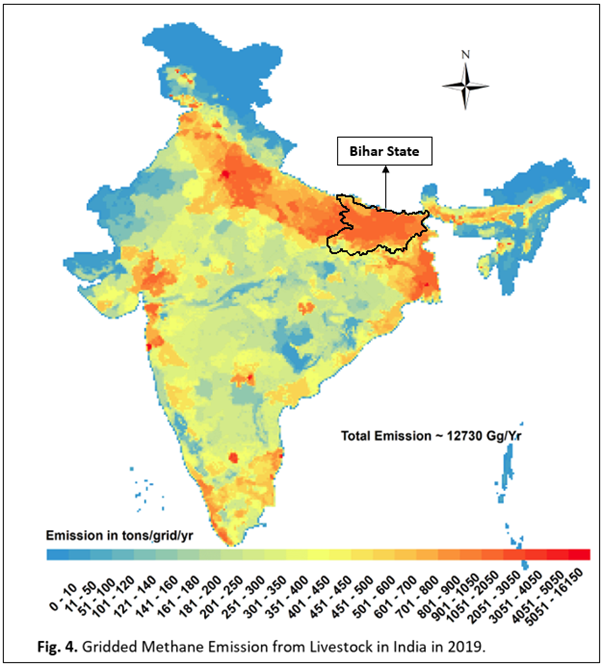
In 2019, Bihar’s methane emissions from livestock were some of the highest in India. (Samal et al. 2024)
As part of the Tata-Cornell Institute’s Zero-Hunger, Zero-Carbon Food Systems project, which aims to reduce greenhouse gas emissions associated with agriculture while improving productivity and benefiting farmer livelihoods, we are examining the potential of one such intervention, sex-sorted semen. This technology has emerged as a means to increase productive herd size, enhance milk yield and mitigate methane emissions by improving herd efficiency.
As the role of power animals has diminished over time due to mechanization, and the beef industry faces significant social and legal challenges—a male calf poses an economic burden for farmers, whereas a female calf presents an economic opportunity. Sex-sorted semen technology has the potential to increase the proportion of productive female animals, with the likelihood of obtaining a female calf reaching nearly 90%, compared to 50% with conventional artificial insemination or natural breeding.
Why aren’t farmers adopting sex-sorted semen?
Recognized for its potential to enhance milk yields and reduce unproductive male births, sex-sorted semen has been actively promoted in Bihar. Despite increasing policy support, the on-ground diffusion of sex-sorted semen remains limited due to both supply- and demand-side barriers. As of 2021, the average extent of artificial insemination coverage in Bihar was merely 16% of the breeding population, with sex-sorted semen accounting for less than 20% of these doses. The government now aims to increase the share of sex-sorted semen in total inseminations to 35% by 2032–33. Considering that the ultimate national objective is to increase conventional artificial insemination coverage to 70%, the quantity of conventional and sex-sorted semen artificial insemination doses administered in Bihar must increase significantly to achieve this ambitious goal.
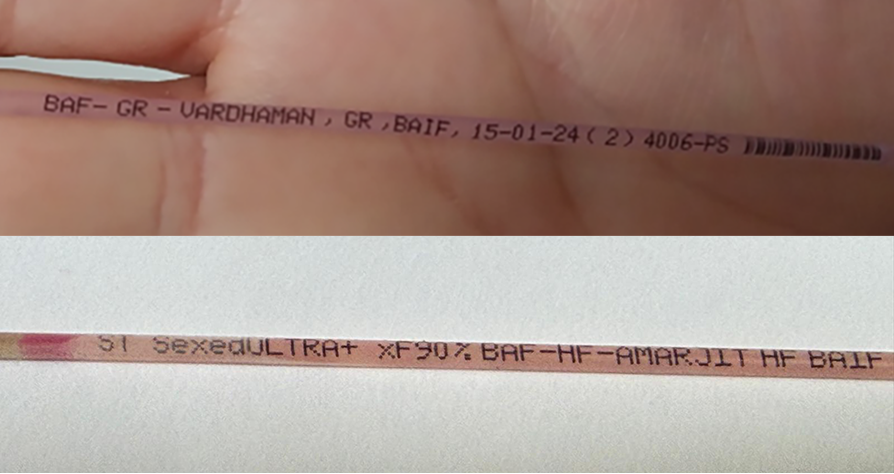
The lack of clear visual markers distinguishing sex-sorted semen straws from conventional straws is one of several barriers to the adoption of sex-sorted semen. The straw in the top photo is conventional. The straw in the bottom photo contains sex-sorted semen. (Photos provided)
On the supply side, key barriers include a limited number of trained technicians to deliver subsidized sex-sorted semen, inadequate cold chain infrastructure for long-term storage and timely delivery of semen, as well as lower procurement of sex-sorted semen doses by artificial insemination technicians due to the high upfront cost. On the demand side, the significantly higher market price of sex-sorted semen (750–1,200 rupees per dose versus 100–150 rupees for conventional artificial insemination) presents a major financial barrier for smallholder farmers. Notably, aside from the dose cost, farmers are also charged for farmgate artificial insemination service delivery, which typically costs 100–150 rupees. Adoption is further hindered by limited farmer awareness, concerns over variable conception rates, and the lack of clear visual identifiers to distinguish sex-sorted semen straws from conventional ones. These challenges highlight the complexity of scaling up the adoption of artificial insemination using sex-sorted semen, especially in a developing region like Bihar.
Surveying Bihar’s farmers
Despite its potential, the adoption of sex-sorted semen—particularly regarding how farmers actually value, engage with, and utilize the technology—has not been systematically studied, and our study fills that gap. We analyzed the willingness to adopt and pay for sex-sorted semen using data from a large-scale representative primary survey of 11,041 livestock-owning households in Bihar. The survey covers 14 districts in the state, employing a purposive random sampling strategy based on the presence of our implementation partner, BAIF Development Research Foundation.

TCI researchers surveyed households from 14 districts across Bihar.
Our average sample household consists of seven members, is male-headed, and has a head averaging 48 years of age. Households are heavily constrained in terms of education and wealth; approximately 43% of households are illiterate, and fewer than 4% have a bachelor’s degree or higher. Moreover, around 7% of households do not own a phone, and 28% are landless, with an average landholding of 0.72 acres among those who do own agricultural land.
About 72% of surveyed households reported using conventional artificial insemination at a median cost of 300 rupees, while 9% reported prior use of sex-sorted semen at a median price of 350 rupees. The relatively low price of sex-sorted semen, compared to its market cost, can be attributed to subsidization under schemes such as the National Gokul Mission, through which the government covers 750 rupees per dose, leaving the farmer to cover the remaining amount.
While the use of sex-sorted semen was quite low, approximately 20% of households reported having heard about artificial insemination with sex-sorted semen, and about 67% of these households were willing to try it and/or pay for it. The average difference in willingness to pay for sex-sorted semen compared to conventional semen ranged from 50 to 250 rupees, indicating that all households were willing to pay a premium to increase the odds of obtaining a female calf. However, households that had utilized sex-sorted semen prior to the survey demonstrated a lower willingness to pay than those that had not.
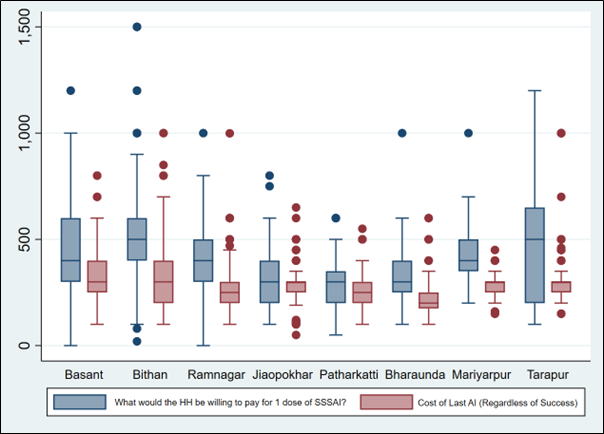
Comparing willingness to pay for sex-sorted semen with the cost of last artificial insemination (among those who had not used sex-sorted semen).
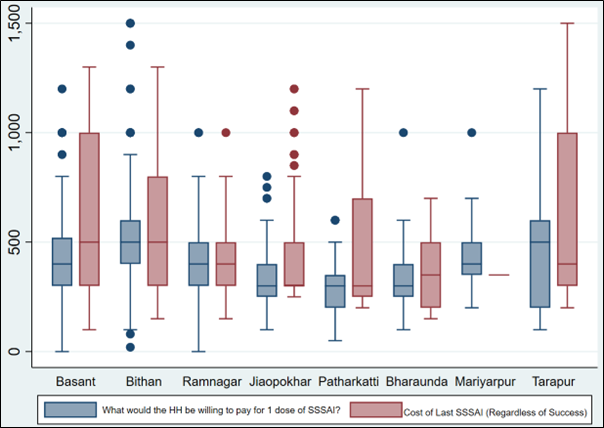
Comparing willingness to pay for sex-sorted semen with the cost of the last use of sex-sorted semen (among those who used sex-sorted semen).
Awareness of sex-sorted semen is key to adoption
Results from our econometric analysis revealed that prior exposure to artificial insemination using sex-sorted semen—specifically, having heard about it—significantly increased the likelihood of adoption by approximately eight times. In contrast, prior sex-sorted semen use, on average, lowered the willingness to pay by about 10 rupees per dose.
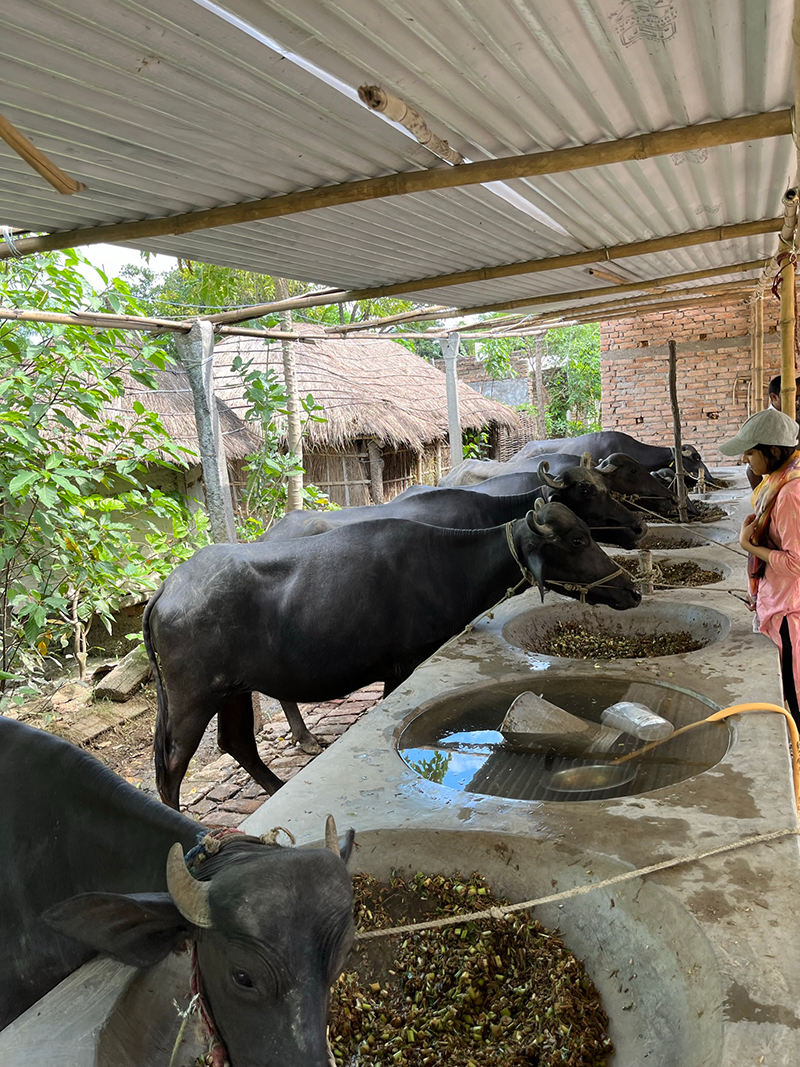
A TCI researcher observes a group of livestock feeding. (Photo by TCI)
Exposure to the impacts of climate change—particularly the increasing challenges in livestock rearing, such as a greater need for permanent shelters or the reduced viability of open grazing due to erratic rainfall—was associated with higher adoption rates and increased willingness to pay for sex-sorted semen. Caregiving quality also played an important role, with better caregiving practices (such as the use of concentrate feed mixture, timely animal vaccinations and special measures to care for pregnant animals) correlating with higher odds of adoption and greater willingness to pay.
Our findings suggest that demand-side policies aimed at increasing farmers’ exposure to artificial insemination using sex-sorted semen—through subsidies or demonstration programs—could be effective in enhancing adoption. Furthermore, messaging that emphasizes sex-sorted semen’s adaptive capacity (e.g., improving herd resilience and productivity) appears more persuasive for increasing adoption than focusing on the technology’s emissions mitigation benefits.
Our upcoming end-line survey will delve deeper into these patterns, examining how information provision can affect the willingness to adopt and pay for sex-sorted semen. Between the two survey rounds, we conducted an awareness campaign designed to educate farmers on the benefits and technical aspects of sex-sorted semen technology and encourage its adoption. Prepared in collaboration with Digital Green and BAIF, the materials explored the linkages between climate change and livestock systems, aiming to promote practices that improve productivity and increase farmer incomes. Through this work, we continue to examine the adoption of sex-sorted semen as a pathway to more productive and sustainable livestock systems.
Sumedha Shukla is a senior associate researcher at TCI.
Milorad Plavsic is the manager for strategic initiatives at TCI.
Featured image: Livestock are one of the leading agricultural sources of greenhouse gas emissions. (Photo by TCI)




